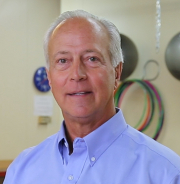TREATMENT OPTIONS: STEM CELL and PRP
A week does not go by in my office or at a PGA Tour event without someone asking about stem cell or PRP treatments. The sports medicine field is constantly searching for ways to heal from injury faster and better. Overuse and traumatic injury are likely no matter how hard an athlete prepares. Once injured there are a plethora of treatment options to choose from while healing. The goal is to utilize the safest and most efficient procedures to restore body function.
Stem cell therapy is a very popular treatment alternative in sports medicine. Stem cells are undifferentiated cells that are present in various parts of the body. In layman’s terms they are cells that are neutral. They are not muscle cells, cartilage cells, or bone cells. They can be extracted from various locations in the body by needle and injected into an area of injury. Being neutral or undifferentiated, once injected into an injured area they can take on the identity of that tissue. A stem cell that is injected into a muscle will take on the characteristics of that a new muscle cell. A new cell undamaged and ready to grow and improve the health of that muscle. The more stem cells that are placed in an injured area the higher the probability of that tissue to heal and restore the capability of that structure.
PRP or Platelet Rich Plasma is also very popular among high level athletes concerned about improving their healing capacity. This alternative involves drawing blood from the athlete and spinning it down in a centrifuge to separate the platelets from the blood. Platelets are the smallest cells in our blood and aid in the clotting process. PRP contains many platelet derived growth factors (PDGF). Growth factors regulate cell growth and division. PDGF plays a significant role in blood vessel formation and the proliferation of cellular structures that are vital for repair and recovery from tissue damage.
Alpha-2 macroglobulin is a large protein in your blood that blocks the catabolic proteinase enzymes that break down body tissue. Alpha-2 protects our cartilage from protease that can cause inflammation and lead to osteoarthritis. When applied to your joint it may inhibit the destruction of cartilage caused by inflammation.
To attain Alpha-2 macroglobulin blood is drawn from the body and spun down in a centrifuge to isolate the protein. It is then injected into the injured area. By decreasing inflammation in the injured area, it is postulated that stem cells and PRP will then have a more receptive cellular ionic environment in which to flourish. Probability of a favorable response to stem cell and PRP injections is then enhanced.
All three of these approaches can be utilized to address specific cellular tissue damage in a professional athlete. Although they have proven effective, attention must equally be given to restoring the functional capability of the injured body part and the entire body’s kinetic chain of movement. Mobility, stability, flexibility and strength have to be addressed. This way the injury will heal and the efficiency of the athlete’s body movement can be restored. Performance can then be improved and maximized.
Wikipedia, diagrams/stem cell, platelet rich plasma.

